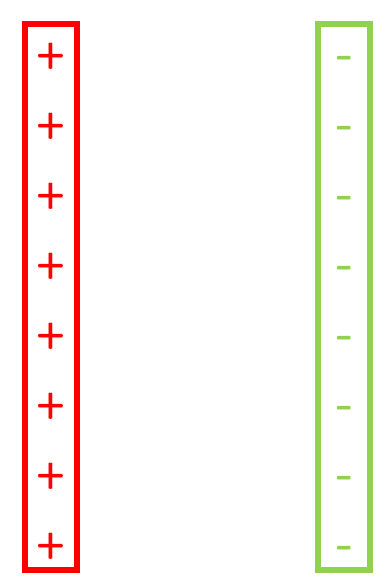In this lesson, we will learn:
or equivalently, by substituting Coulomb's law:
electric field, in newtons per coulomb (N/C)
electric force, in newtons (N)
charge that experiences the field, in coulombs (C)
Coulomb's law constant,
magnitude of charge that creates the field, in coulombs (C)
distance from charge, in meters (m)
magnitude of electric force, in newtons (N)
Coulomb's law constant,
magnitude of each charge, in coulombs (C)
distance between charges, in meters (m)
- Meaning of electric field and its relationship to electric force
- How to draw electric field line diagrams
- Solving problems with electric field
- Electric field (E) is the electric force exerted by a charge Q on another charge q, per unit charge of q. It is a vector quantity.
- By convention, the direction of electric field vectors is defined as the direction that a positive test charge would move if placed in the field. Fe points in the same direction as E for positive charges, and in the opposite direction of E for negative charges.
- A test charge is a point charge with a very small magnitude. Test charges have a small magnitude charge so that the electric field of the test charge is negligible and does not affect the electric field that is being investigated.
Electric Field
or equivalently, by substituting Coulomb's law:
electric field, in newtons per coulomb (N/C)
electric force, in newtons (N)
charge that experiences the field, in coulombs (C)
Coulomb's law constant,
magnitude of charge that creates the field, in coulombs (C)
distance from charge, in meters (m)
Coulomb's Law (Electric Force)
magnitude of electric force, in newtons (N)
Coulomb's law constant,
magnitude of each charge, in coulombs (C)
distance between charges, in meters (m)













